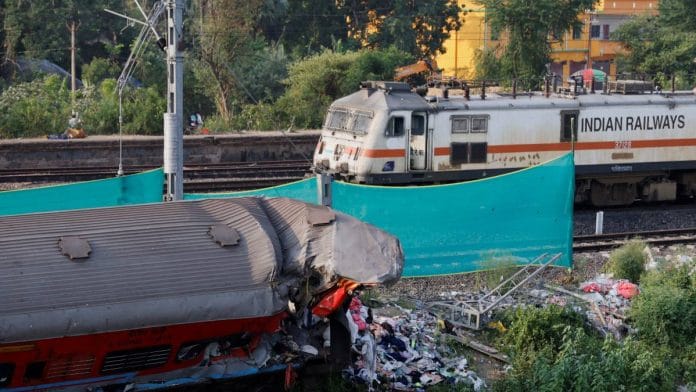The unfathomable tragedy at Balasore stirred the national conscience and led to calls for fixing accountability. Even as we wait for a probe to clearly establish the sequence of events, we ought to acknowledge the massive operational challenges of the behemoth that is Indian Railways, or IR.
The national transporter is saddled with a substantial wage bill, with salaries of its 12.5 lakh employees and pensions of 15.5 lakh retirees taking up over two-thirds of its earnings. This leaves precious little from its internal resources to invest in capital expenditure, thus keeping it dependent on budgetary and non-budgetary support for 97 per cent of its capex. Through all of this, the IR is riddled with complaints of significant delays, poor customer service, and overcrowded trains.
Experts and citizens alike have often touted privatisation as a panacea for the IR’s major ills. However, the global evidence on private rail companies remains mixed. For example, while Japan seems to have cracked the code with profitable yet high-performing private rail, the United Kingdom’s poor experience has resulted in a surge in political support for re-nationalisation. Therefore, privatisation is no silver bullet, especially in a country like India, where the IR is often the only means of long-distance travel accessible to our co-citizens.
On the question of railway safety alone, however, the answer is more definitive. Quantitative evidence from both Japan and the UK shows that privatisation has not led to an increase in rail accidents. On the contrary, most indicators of rail accidents have improved, even after accounting for the general trend of better rail safety in recent decades. As India emerges from the trauma of what happened at Balasore, the answer may lie in an idea that has lately been relegated to an afterthought in public policy: the privatisation of the Indian Railways.
Also read: Odisha triple train crash probe focuses on electronic track management system
The devil is in the detail
The mixed global experience of railway privatisation necessitates a closer look that may help us understand how India can successfully make the transition. The first lesson we can draw is that privatisation works better in high-density, high-demand regions. Saddling the private sector with the additional burden of meeting the social objectives of last-mile connectivity may result in an unhappy middle ground. After Japan broke its railway network into six companies in 1987, it found that the four companies that served the two main islands turned profitable while those serving the peripheral islands continued to depend on government support.
The second lesson emanates from the design of the privatisation process itself. Whereas each of Japan’s six railway companies owns all aspects of the railway infrastructure in its designated territory, the UK-created companies based not on geography, but on function. For example, the signalling and infrastructure were owned by a single company, whereas others competed to win ‘franchises’ to run trains on certain lines. Rail privatisation in the UK has led to lower investment in infrastructure, crowded trains and exorbitant pricing, with 68 per cent of its citizens now supporting re-nationalisation.
Japan’s experience also shows us that the road to successful railway privatisation runs through monetisation of real estate. Japan’s private railway companies generate between 30 to 60 per cent of their revenue from commercial and real estate businesses. These companies operate shopping centres, restaurants and hotels on railway property, thus generating revenue to keep ticket prices low. Most railway operations, including India’s, have large real estate portfolios but have not been able to monetise them successfully.
Also read: Odisha train accident: Official flagged ‘serious flaws in signalling system’ in February
Developing the capacity for privatisation
Underlying the success of the Japanese privatisation miracle, however, is an effective public regulator. The regulator collects detailed information about the costs incurred by each private company, using that to determine the maximum fare each can charge. This has ensured that, unlike in the UK, rail ticket prices in Japan have risen by less than overall inflation. If India is to consider privatisation – which it must – it needs to bolster its regulatory capacity to do so.
The central government must also develop an appetite for politically unpopular decisions. With the IR saddled with a debt of over Rs 7 lakh crore, the government will need to absorb a large part of that debt burden to make the system more lucrative for a private buyer, much like what Japan did. Even after privatisation, the government must run some, or even most, of the railway infrastructure. But by operating a smaller and more manageable network, it can do so more effectively.
Most importantly, rail privatisation needs to be conducted in an experimental and iterative manner rather than as a big-bang reform. With design and contextual factors being paramount, there is no singular global template for success. The first step can be privatising a high-density system such as the Mumbai Suburban Railway or a profitable high-end train line between major cities. While success is not guaranteed in either case, we owe it to the hundreds of millions of rail passengers in the country to try new ideas to improve safety and performance.
Subhashish Bhadra is author of ‘Caged Tiger: How Too Much Government is Holding Indians Back’. He tweets @Subhashish30. Views are personal.
(Edited by Zoya Bhatti)






